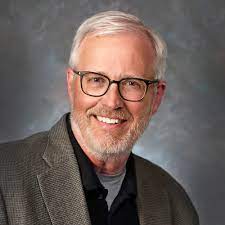While my parents were still living, I often traveled from Holland to Grand Rapids and lunched with them at Porter Hills Retirement Village. On one of my trips to Grand Rapids, I decided to drive past the old Third Reformed Church.
Located on the corner of Diamond and Hermitage, Third Reformed was a haven for Dutch emigrants around the turn of the century. Third hosted Jacobus and Patrinella Boogaart who in the 1920s had emigrated from Texel, the largest island of the Dutch archipelago in the North Sea. Jacobus was a poor tenant farmer who apparently ran afoul of the law and left the island to make a new start in the land of the free.
Jacobus and Patrinella were not church-goers on the island of Texel, but they were so thankful to Third Church for its help in finding work and lodging that they were drawn into its orbit. They raised their three children there, the oldest being my Dad, who in turn married my Mom and raised us, their four children, there. I was one of three generations whose lives were caught up in the rhythms of Third Reformed Church.
As I arrived at the church, I parked on Hermitage Street and stepped out onto the broad sidewalk where the men and women used to congregate and talk in tight circles after services. I tried the front door and to my surprise it was unlocked. I entered and climbed the flight of stairs to the sanctuary. Only silence was there to greet me. I thought about leaving but then voices from the past began to break the silence. I felt drawn into the sanctuary and sat down in a pew close to where the Hamelink family used to sit.
Taking in the surroundings, I was surprised to see that very little had changed. The congregation that had bought the building apparently did not have the money to update and repair. The stained glass windows remained, although now some panes had fallen out and were boarded up with plywood. The large wooden pulpit stood there like the prow of a ship that for years had led the gathered faithful into the uncharted waters of their future. The communion table still stood below the pulpit with the words “In Remembrance of Me” carved into the front panel. The baptismal font was gone, but then I remembered that my brother had saved it from the dumpster after the church had moved to its new location on Michigan Street. It sits in his garage awaiting rebirth. On either side of the pulpit were benches, the east side where the elders used to sit taking notes on the sermon and the west side where the choir used to sing with hearts in perfect pitch if not always voices.
Memories never float free; they attach themselves to places. Every nook and cranny of this old wooden ark of a church held memories, and they came flooding back to me. I got up from the pew and meandered about the church, eventually making my way to a large room in the basement where we used to gather for Sunday School. I could see Mrs. Ter Molen waving her arms and leading us in singing, and Miss Bouw dutifully playing the piano. The song, “Life is Like a Mountain Railroad,” came back to me, not very theologically profound, reinforcing an otherworldly understanding of heaven, but we all loved and requested it.
I looked at the south wall of the room, and I remembered that a map of Grand Rapids used to hang there with red topped push-pins stuck in it representing the addresses of each family of the church, maybe sixty or seventy in all. A red thread was tied to each red pin and was drawn to one large blue push-pin, the location of the church on Diamond and Hermitage.
Even after I returned to my car, the memory of the map stayed with me. It offered a grand vision of the church and its place in the world. All of us are pilgrims and oriented to the House of God. To this House we journey, and at this House we come into the presence of God. In hearing the word of God from the pulpit, being renewed at the font of God, and sharing a meal at the table of God, we imbibe the love of God and become more and more like our self-sacrificing Savior. And from this House, we journey home so that the love that glorifies us can shine from our houses to our neighborhoods and, to borrow a phrase from Abraham Kuyper, every square inch of the world. This ebb and flow of the sacrificial love of God is the means by which the great hope of the people of Scripture was realized: the love of God filling the earth (Psalm 33).
Yet, the memory of the map and its grand vision troubled me. When has this vision ever been realized? When has the church not struggled to experience the sacrificial love of God in the rituals of word, font, and table, and when has the church not struggled to share that love with our neighbors and to embody that love in the systems that constitute our neighborhoods? And when has the church not been beguiled by visions of Christianity less demanding than this one of sacrificial love and a worldwide mission?
I made my way to Porter Hills and sat to lunch with my parents, faithful pilgrims. I thought of all the pilgrimages over all the years to Third Church and back home again. Like everyone else they struggled to experience the real presence of God in Word and Sacrament and to make their house the embodiment of sacrificial love in their neighborhood. Yet when I looked at them, I could see in their faces, now softened by age, glimpses of the glory of God shining through.


